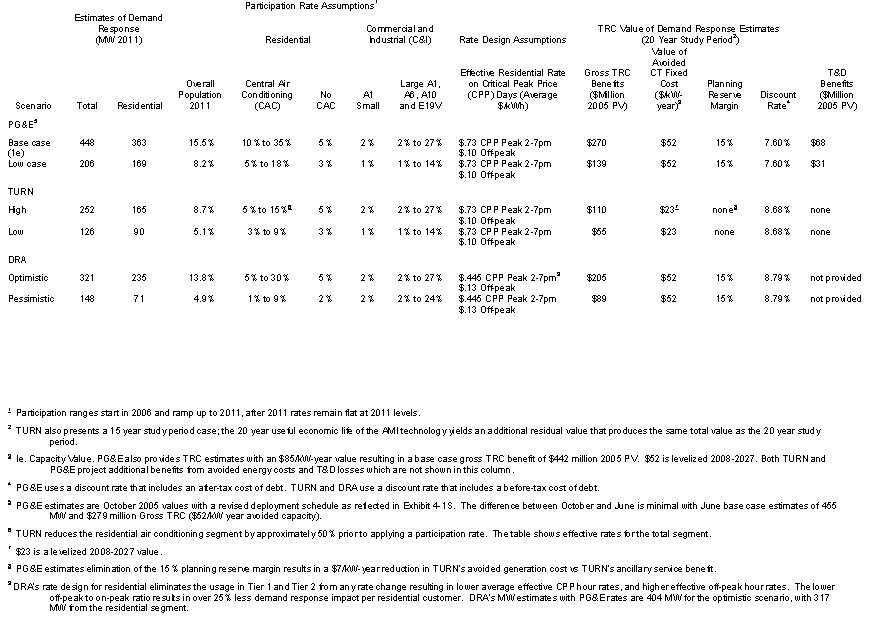Comparison of Demand Response Forecast and Benefits
(Source: PG&E's Opening Brief, Appendix C.)

11.3. Demand Response Conclusion
We believe that PG&E conducted a comprehensive study of demand response using the statistical model developed in the SPP. With the aggressive and comprehensive educational advertising component in PG&E's CPP proposal, the customer participation level is likely to achieve the levels supported by PG&E's testimony. This CPP rate is a precursor of more accurate and timely rate designs that will be possible following the full implementation of AMI. A voluntary program will allow PG&E to build trust with the first eligible customers (those with AMI deployed) and subsequent rate design proceedings can build on the experience we derive from the voluntary CPP as we achieve full deployment. We have no record to consider either a mandatory or an opt-out program at this time.
Deployment is geared to the hotter climate zones first - those customers will have the greater potential and we hope the greater willingness to participate in a demand response program as PG&E builds-out the system. According to PG&E's witness, the bill protection and the customer's ability to opt-out after the first year are critical inducements to successfully sell this rate proposal43 - otherwise DRA and TURN's more dismal forecasts could be realized. We noted already the multi-year duration of the deployment: so not all customers will have the CPP available to them for the summer in 2007, or even for several more years until their neighborhood is converted and switched over to the AMI system. As a result, the demand response contributions will grow dramatically each year until all AMI modules are installed.
We find PG&E's forecast for the range of likely customer responses and the impact of its CPP to be credible and persuasive. We will adopt PG&E's forecast and use it to evaluate the cost-effectiveness of AMI.
43 Ex. 4, p. 3-15.



